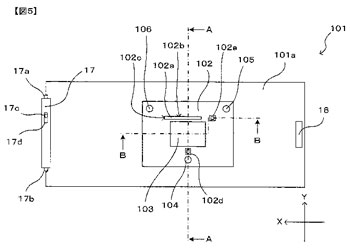Dream camera? Right, this sounds too good to be true. A Japanese startup company partially financed by Chinese (!) venture capital today announced a dream come true for any photographer: “Digilusion,” a newcomer still fighting for the right to the company name and Web domain, released a widely ignored statement claiming to revive the long-held dream of adding a digital sensor to an existing film SLR. But the real revolution ahead is a complementary product lineup: Digilusion plans to release unique professional and consumer cameras with the capability to simply swap a camera’s back to upgrade sensor and electronics.
Nikon last year filed a patent that shows a mechanism for mounting and adjusting the position of a digital sensor on a rear door that could be used to replace the conventional film door. However, the patent only covers the mounting of the sensor relative to the film guides — it doesn’t address any of the hurdles that have stood in the way of anyone realizing this long-discussed idea.

Many film SLR owners have long harbored the dream of converting their camera to digital. Until this day engineers tried to create systems that could be installed in a wide range of Canon, Nikon and Leica silicon film cameras. Digilusion brings that possibility much closer. CEO Hara Kiri told the press that they have overcome the most fundamental problems of retrofitting a digital sensor into the film bay of an existing SLR. These problems include lack of battery space and the need to constantly open the camera to change ISO, white balance or any other image setting.
Key is to not only use the existing space of a camera’s film bay, but to produce modules consisting of sensor, electronic parts, battery compartment and replacement backs with rear LCD, allowing photographers to live with the simplicity of how photography once was combined with the advancements of technology, such as the rear LCD to check images on, and thereby enabling features such as a completely new kind of live view focus peaking — “making autofocus redundant,” as Mr. Kiri assured.
“Our digital backs are marvels of optical and technical engineering and they match the look, feel, texture and materials of how cameras were built back then,” Digilusion’s CEO told the press. “And we overcame the main problems. Our technology knows when the shutter is being fired in order to sync its expsorue with the shutters’s movement.”
Asked whether the toppings currently used in front of today’s sensors, such as microlenses, low-pass and IR filters, no longer pose a challenge, Kiri said Digilusion invented incredibly thin filter layers to avoid fouling the shutter which in conventional SLRs is mounted very close to the film plane.
Nevertheless, there seems to be a Catch-22. The company was not able to confirm exact sensor size. Existing bodies leave little room to fit the sensor’s mounting board if classic 35mm full-frame sensors were used. Using smaller cropped sensors, on the other hand, would then require a means of masking the viewfinder to show the relevant crop. Mr. Kiri was only able to confirm “practically full-frame sensor dimensions,” implying that photographers better get used to a near-full-frame sensor experience without actually being able to to tell the difference between old and new format. “No relevant crop factor,” that’s all Mr. Kiri was willing to confirm.
As all of these challenges can be lessened if the back were designed in concert with a new camera body. This is why Digilusion plans to soon go ahead with the production of a unique lineup of compact mirrorless (!) professional and consumer cameras offering the capability of simply swapping a camera’s back to upgrade sensor and electronics. Soon you may not have to buy a whole new camera when upgrading. But first the Japanese-Chinese startup wants to create brand awareness and trust in Digilusion’s quality. “We’re in for the long run and in no hurry”, Mr. Kiri said. “We got great financial backing and our patents cover the next 15 to 20 years. We’re totally ahead of the competition.”
There is no word yet with which lens maker, if any, Digilusion is teaming up and whether its sensors are made in-house or not, but Mr. Kiri seemed confident that his company’s digital backs will provide exciting solutions for most cameras and lenses. “You didn’t know yet what your old camera’s capable of and what your next camera will be capable of,” he smiled.
The company was not able to produce prototype models at the official launch event, not even veiled ones, but Mr. Kiri seemed confident they’ll soon launch their “killer” products and change the industry altogether. At the same time, online searches for “Digilusion” remain futile whereas Mr. Hara Kiri’s past points to aerospace engineering.


